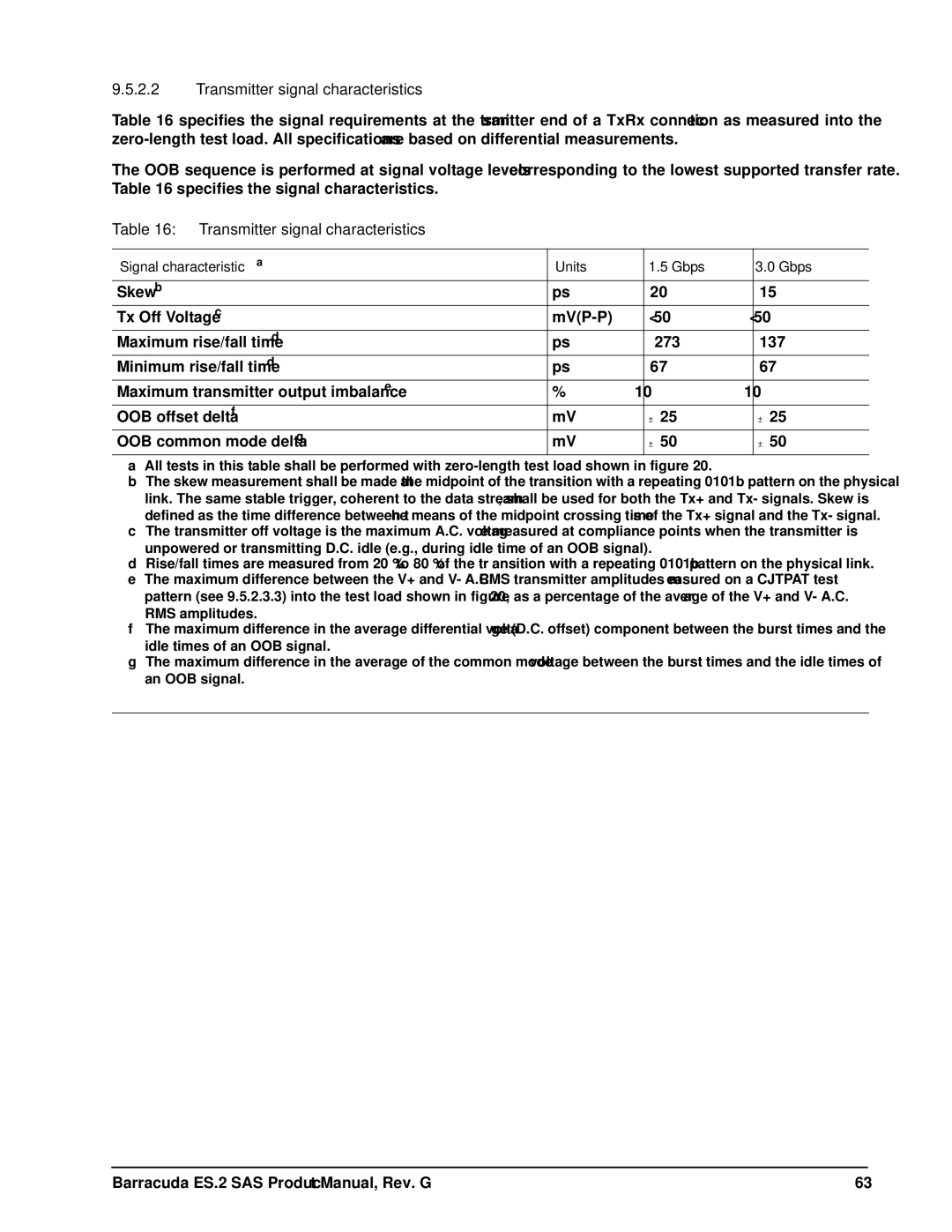
9.5.2.2Transmitter signal characteristics
Table 16 specifies the signal requirements at the transmitter end of a TxRx connection as measured into the
The OOB sequence is performed at signal voltage levels corresponding to the lowest supported transfer rate. Table 16 specifies the signal characteristics.
Table 16: Transmitter signal characteristics
Signal characteristica | Units | 1.5 Gbps | 3.0 Gbps |
Skewb | ps | 20 | 15 |
Tx Off Voltagec | < 50 | < 50 | |
Maximum rise/fall timed | ps | 273 | 137 |
Minimum rise/fall timed | ps | 67 | 67 |
Maximum transmitter output imbalancee | % | 10 | 10 |
OOB offset deltaf | mV | ± 25 | ± 25 |
OOB common mode deltag | mV | ± 50 | ± 50 |
aAll tests in this table shall be performed with
bThe skew measurement shall be made at the midpoint of the transition with a repeating 0101b pattern on the physical link. The same stable trigger, coherent to the data stream, shall be used for both the Tx+ and Tx- signals. Skew is defined as the time difference between the means of the midpoint crossing times of the Tx+ signal and the Tx- signal.
cThe transmitter off voltage is the maximum A.C. voltage measured at compliance points when the transmitter is unpowered or transmitting D.C. idle (e.g., during idle time of an OOB signal).
dRise/fall times are measured from 20 % to 80 % of the transition with a repeating 0101b pattern on the physical link.
eThe maximum difference between the V+ and V- A.C. RMS transmitter amplitudes measured on a CJTPAT test pattern (see 9.5.2.3.3) into the test load shown in figure 20, as a percentage of the average of the V+ and V- A.C. RMS amplitudes.
fThe maximum difference in the average differential voltage (D.C. offset) component between the burst times and the idle times of an OOB signal.
gThe maximum difference in the average of the common mode voltage between the burst times and the idle times of an OOB signal.
Barracuda ES.2 SAS Product Manual, Rev. G | 63 |
